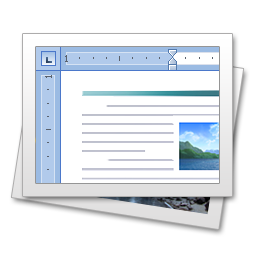We Are Open For Input!
Review the 2026 Draft Access Design Standards below and share your thoughts. We will be accepting feedback until November 24, 2025.
About The Project
This project aims to update the City’s Access Design Standards (ADS), a policy document that guides project managers and external consultants on design and construction requirements for new buildings and the renovation of existing City infrastructure.
The Standards apply to all City facilities and other public spaces on City-owned land: facilities, roads, sidewalks, pathways, parks, pedestrian crossings, parking lots, bus stops, transit stations and more. These standards emphasize universal design and accessibility for people with physical, sensory and cognitive disabilities.
We are currently engaging with with interested and impacted parties as part of Round 2 of engagement. For more information on the project or earlier rounds of engagement, please visit https://engage.calgary.ca/ADSU.
Stage 1: General Outreach and Engagement
In this initial stage, we will Listen & Learn and Consult with participants. We'll gather their insights on what is effective and what needs improvement in the Access Design Standards. This feedback will guide the next phase of our outreach and engagement.
Stage 2: Targeted Outreach and Engagement
During this phase, we will Consult and Collaborate through targeted workshops and meetings. We'll collect feedback from participants with lived experience and subject matter expertise, incorporating insights from the first stage.
Stage 3: Report Back
In the final stage, we will Inform/Communicate by sharing information with the community. We will present the completed "What We Heard" and "What We Did" reports
The ADS are The City’s barrier-free and universal design requirements for city infrastructure (including facilities, roads, sidewalks, pathways, parks, pedestrian crossings, parking lots, bus stops and transit stations).
These standards were first introduced in 1988 and are updated approximately every five years to align with the Province of Alberta’s building code adoption. The building code provides the legal minimum standards that must be adhered to in the design and construction of buildings.
The ADS incorporates current accessible and universal design best practice standards that go beyond building code minimums to improve built environment access and navigation for people with physical, sensory, and cognitive disabilities.
The ADS arerequired in the design and construction of all new and renovated municipal infrastructure on City-owned land. This includes:
- Facilities and other public spaces that are operated by The City of Calgary
- Facilities and other public spaces that are built on City-owned land but operated by another organization (e.g., Community Associations and Civic Partner facilities such as Calgary Zoo, Heritage Park, MNP, Vivo)
The ADS is not retroactive, so will not be applied to existing facilities or other public spaces until a renovation is taking place. At that time, only those components that are within the scope of the renovation will be required to apply ADS.
Private landowners and developers are not required to meet the ADS. The 2023 National Building Code – Alberta Edition and municipal Bylaws such as the Land Use Bylaw outline the requirements for development and building on privately owned land.
The Calgary Corporate Accessibility Policy outlines the City of Calgary’s commitment to providing the greatest level of access and the right of people with disabilities to reach, use and participate in City facilities and open spaces. The ADS achieves the desired outcomes outlined in the policy through the development and application of standards that address areas not mandated by the building code. The premise of the ADS is to ensure that public spaces are useable and functional for people with disabilities.
Municipal infrastructure includes but is not limited to the following:
- Buildings and facilities owned and operated by The City of Calgary
- Other buildings and facilities on City-owned land (e.g. civic partners such as Calgary Zoo, Heritage Park etc.)
- Roads
- Sidewalks
- Pathways
- Parks
- Pedestrian crossings
- Bus stops and transit stations
- Etc.
Technical feedback refers to structured, evidence-based input that is aimed at ensuring:
- Accuracy
- Clarity
- Feasibility
- Compliance with legal and regulatory requirements
It may also include:
- Limitations related to products, supplies, or construction methods (e.g., unavailable sizes, structural impossibilities)
- Identification of gaps or inconsistencies
- Recommendations for improvement based on accessibility best practices and relevant legislation
- Evaluation of technical feasibility
- Clarification of terminology or formatting to ensure the standards are easily understood and actionable
The Access Design Standards (ADS) are The City of Calgary’s standards for designing accessible public infrastructure, including:
- Facilities
- Buildings
- Roads
- Sidewalks
- Pathways
- Parks
- Pedestrian crossings
- Bus stops
- Transit stations, and more.
Topics outside the scope of ADS include:
- Operational issues (e.g., snow removal, maintenance procedures)
- Vehicles themselves (e.g., buses, trains, or other transit equipment)
Accessible: When applied to a facility or other public space, accessible means it can be entered, exited, and used by people with physical, sensory and cognitive disabilities.
Barrier-free: When referring to the building code, barrier-free design principles are the minimum requirements for the design and building requirements that accommodate people with disabilities.
Built Environment: This refers to the human-made surroundings that provide the setting for human activity. This includes buildings, parks, roads, bridges and other infrastructure.
Universal Design: A space is designed to be accessible, understood easily, and is usable by all people regardless of their age, size, ability, or disability.
The 2026 Draft Access Design Standards
-
 Calgary Draft Access Design StandardsPDF (2.93 MB)
Calgary Draft Access Design StandardsPDF (2.93 MB)The 2026 Draft Access Design Standards is uploaded here for your review. You can add your comments on this draft to the feedback form below. A reminder that this is a draft and your input is valuable.
-
 Technical Feedback Form - Draft ADS 2026MS Word (29.38 KB)
Technical Feedback Form - Draft ADS 2026MS Word (29.38 KB)Fill out this form with your comments about the Draft 2026 ADS and submit the completed form below.




